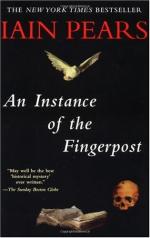|
This section contains 963 words (approx. 4 pages at 300 words per page) |

|
An object is "anything with a boundary." This can be extended in computer science to be "anything with a boundary that represents a uniquely identifiable entity; unit; or item, real or abstract; that represents some element in the problem domain."
What this means is that an object represents a "thing" or an idea in the real world. Although programmers talk of objects in non-object orientated languages like C, this is a bit misleading because in Object Orientated Design objects typically have both data, sometimes called "state" or "identity," and they have behavior, things that they can do, either on their own data or data given to them by other objects. The behaviour of objects is defined by the methods it supports. A method is basically a function, or self-contained block of code that performs some action and returns a value. The semantic difference between methods and functions is...
|
This section contains 963 words (approx. 4 pages at 300 words per page) |

|


